|
|
|
|
|
|
|
|
September 22, 2022 | ISSUE 44 |
|
|
 |
SkySat • Cerro Dominador Solar Thermal Plant, Atacama Desert, Chile • May 13, 2020 |
In this week’s issue: We review some climate wins as seen from space; forests display a curious checkerboard pattern in the Pacific Northwest; and a plume of sediment expands into the Adriatic Sea. |
|
|
|
|
FEATURED STORYClimate Wins
Celebrating climate victories is a bit like getting hit by Goliath and cheering because the blow didn’t kill you. The foe is menacing and (at the moment) winning. As we debate strategy in the war room, climate change has turned from a mirage on the horizon to an army storming the gates. It’s had a centuries-long head start. But while our collective response has been paltry so far, we’ve still got a few stones left to sling.
Amid the barrage of doom and gloom stories on the climate crisis emerge a few buds of hope: a forest regrown here, a policy enacted there. We don’t mean to sugarcoat things—the situation is still dire and currently getting worse. But progress is being made. And we find it encouraging to take note of even the smallest wins. So as folks gather at Climate Week NYC, we wanted to share some hopeful stories that reveal, despite the odds, progress is possible (and happening).
|
 |
PlanetScope • Vegetation regrowth by Justdiggit, Pembamato, Tanzania • May 27, 2018 - May 11, 2022 |
Let’s begin with perhaps the most promising trend: renewable energy. Solar, wind, and hydropower are the foundations of the modern energy transition. Renewables are the fastest growing energy source globally, they don’t emit greenhouse gases, and their cost is rapidly falling. The future of energy production is green, unlimited, and downright sensible… and we’re here for it. |
 |
PlanetScope • London Array, Thames Estuary, UK • April 17, 2016 |
Measuring the number of renewable sources and their impact is getting more difficult as they proliferate globally. It’s easy to spot a wind turbine or solar array from the window of your car, but counting each installation across the world is quite a different story. What would have taken years in manual counting can be done in hours by Global Renewables Watch. Its AI-satellite mashup is creating an atlas of every solar and wind energy source to show planners exactly how much output they’re producing and how the land is being impacted around them. |
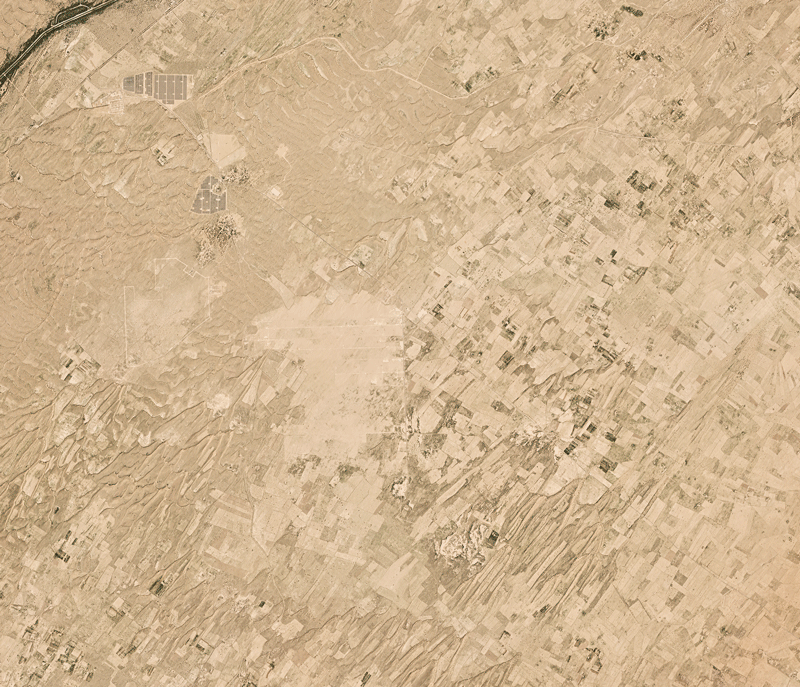 |
PlanetScope • Bhadla Solar Park, India • 2017 - 2022 |
For all the complicated politics, economics, and finance involved, the short-term goal is fairly simple: get off fossil fuels ASAP. And with any challenge you start with the low-hanging fruit. Coal is the most carbon-intensive fossil fuel with a slew of other consequences associated with its production and use. Fortunately, the industry is in steep decline as cleaner, less naughty, energy sources fill its stockings. Around the world, coal plants like the Navajo Generating Station—the largest in the western US—are closing their smokestacks for good. |
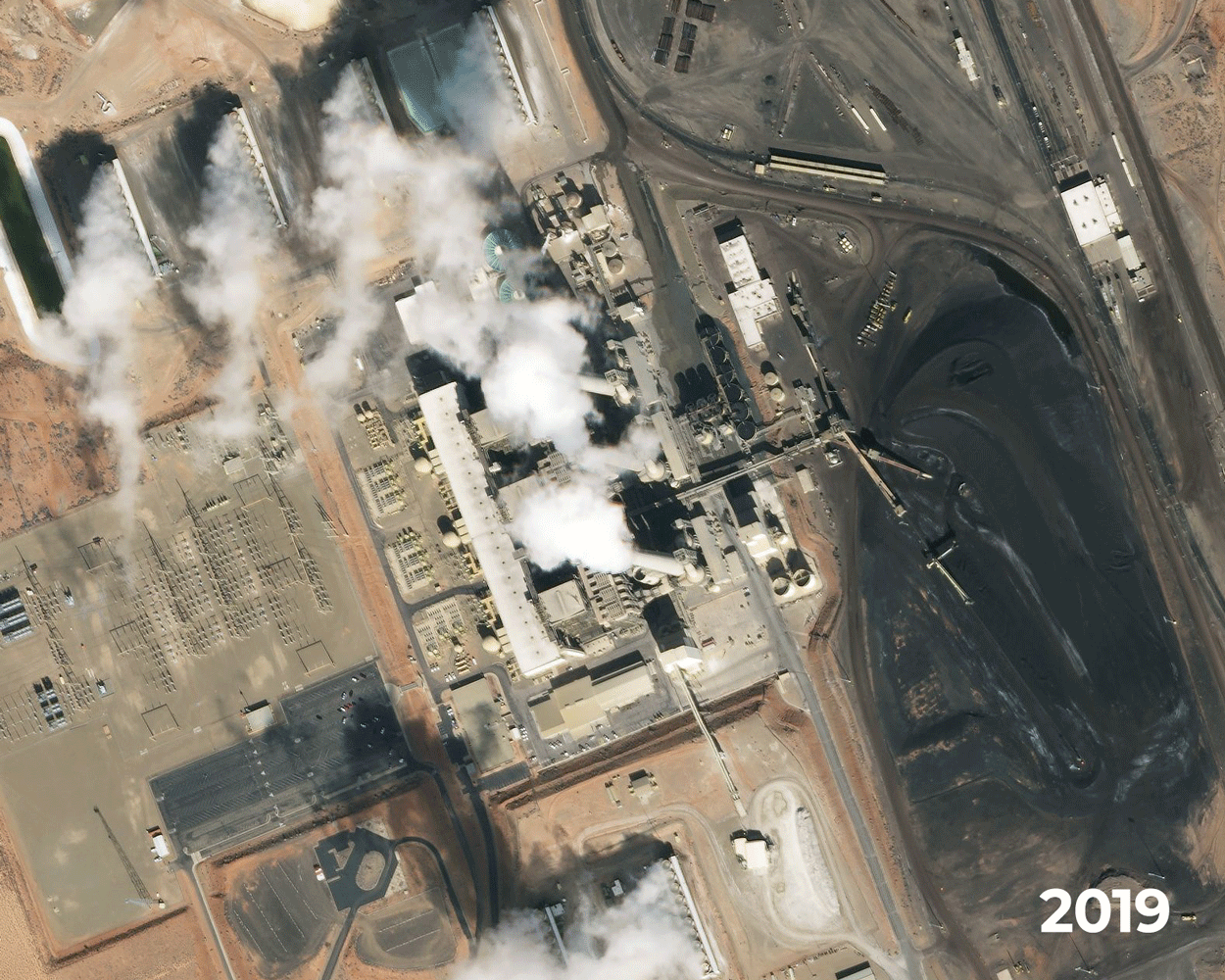 |
SkySat • Navajo Generating Station, Arizona, USA • 2019 - 2021 |
As we look to reduce greenhouse gas emissions, it’s important to consider not just where we get the energy but also where it’s being used. Transportation accounts for the largest share of anthropogenic greenhouse gas emissions in the US, and over half of that comes from passenger cars. Say what you will about the eccentric billionaire behind it, but Tesla has helped drive the electric vehicle revolution. The market still has a lot of growing to do, but its early success is a clear climate win. |
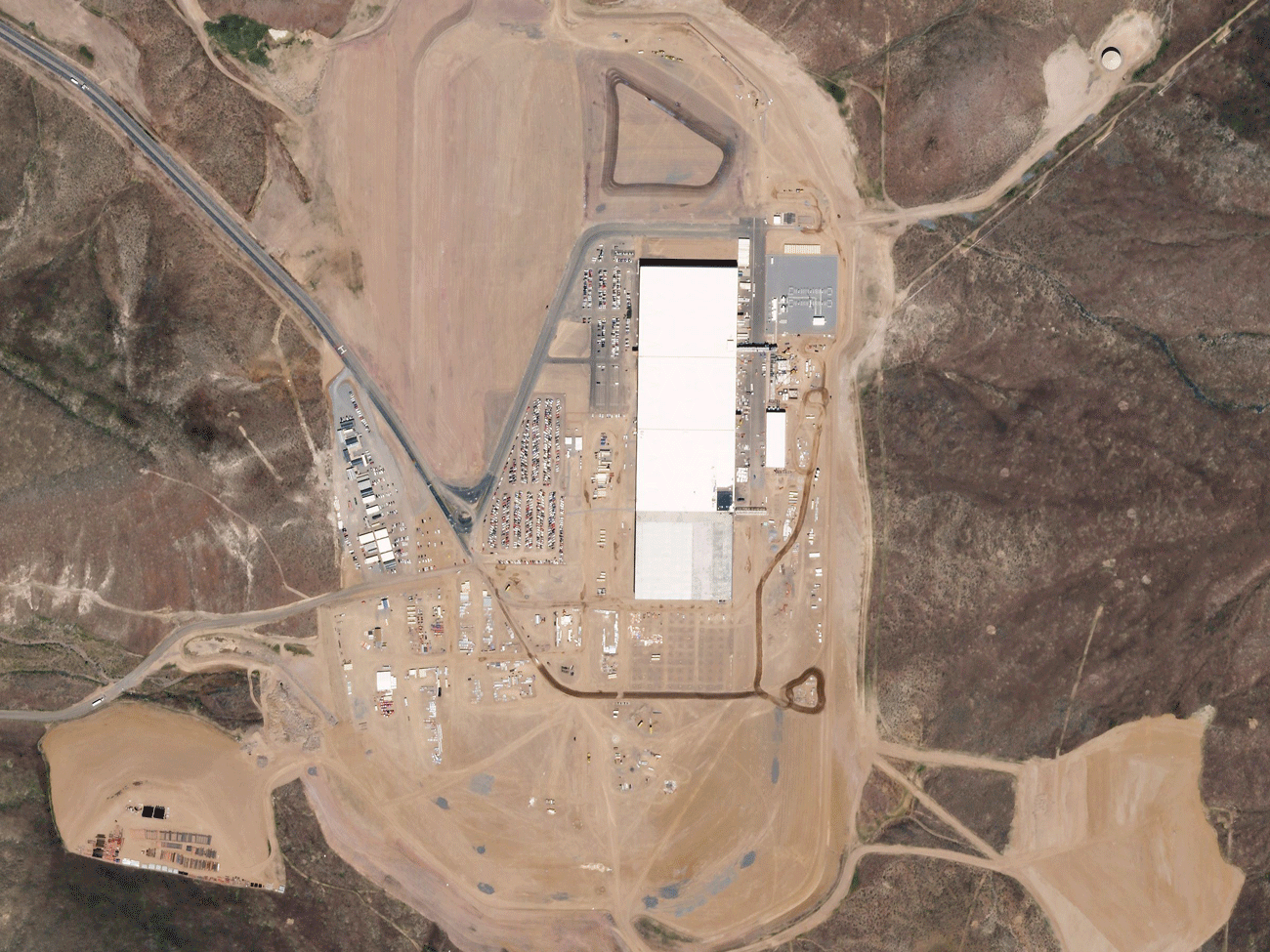 |
PlanetScope • Tesla Gigafactory, Sparks, Nevada, USA • May 11, 2016 - August 8, 2017 |
At the movement’s foundation is a growing body of climate activists who are advocating for major reform and keeping the pressure on decision makers to act in the world’s best interest. Millions of people in over 180 countries protested for climate action in September 2019, just months before the COVID pandemic. Other activists are visualizing the heating Earth with warming stripes, graphics that illustrate global warming with shades of blue and red. |
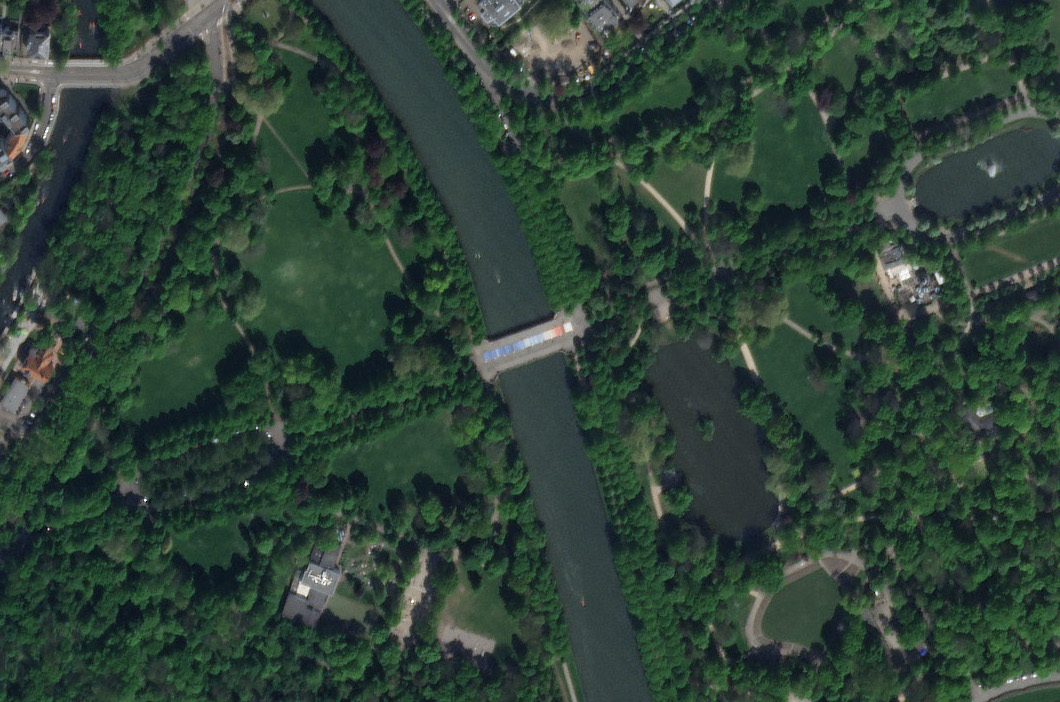 |
|
SkySat • Warming stripes visualization in Leipzig, Germany • May 7, 2022 |
Activism is having a far greater effect than just raising awareness. Nearly a year ago a grassroots campaign took Shell to court over proposed seismic testing in the relatively untouched waters of South Africa’s Wild Coast. And guess what? The local campaign won. It’s an encouraging victory for the country, and everyone who prefers corporations leave biodiverse treasures alone. |
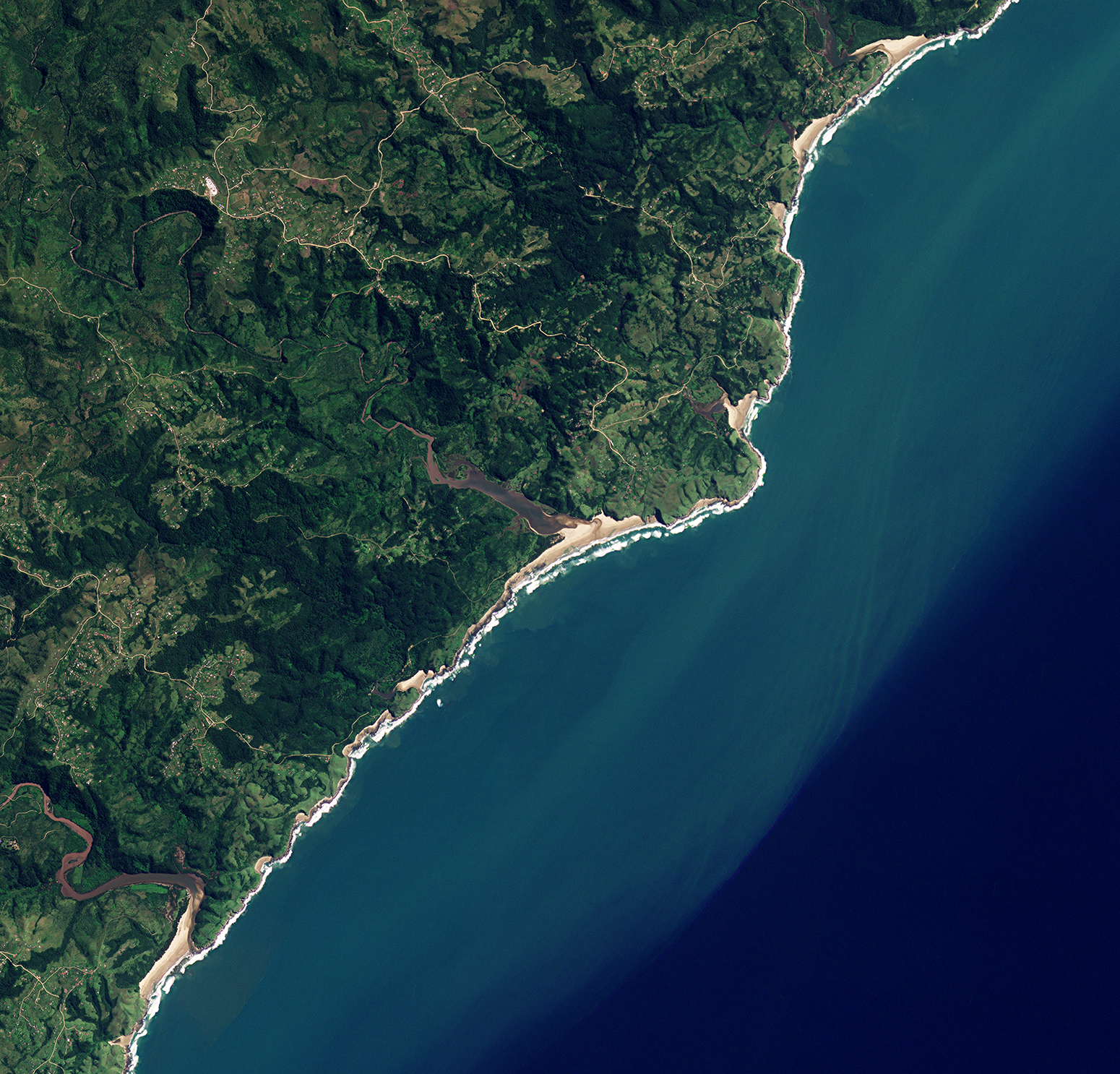 |
PlanetScope • The Wild Coast, South Africa • March 20, 2022 |
For centuries powerful industries have seen Earth as plunder, and we’ve largely inhabited the planet without regard for its complex mechanisms. But we’re learning how to adapt our built systems to the natural environments around them. Eco-friendly design is slowly becoming the norm around the world, and one of these features visible from space is the wildlife corridor: an area used to bridge wildlife populations that have been disconnected by human activity. Designing infrastructure to accommodate and benefit species other than our own is a good start. |
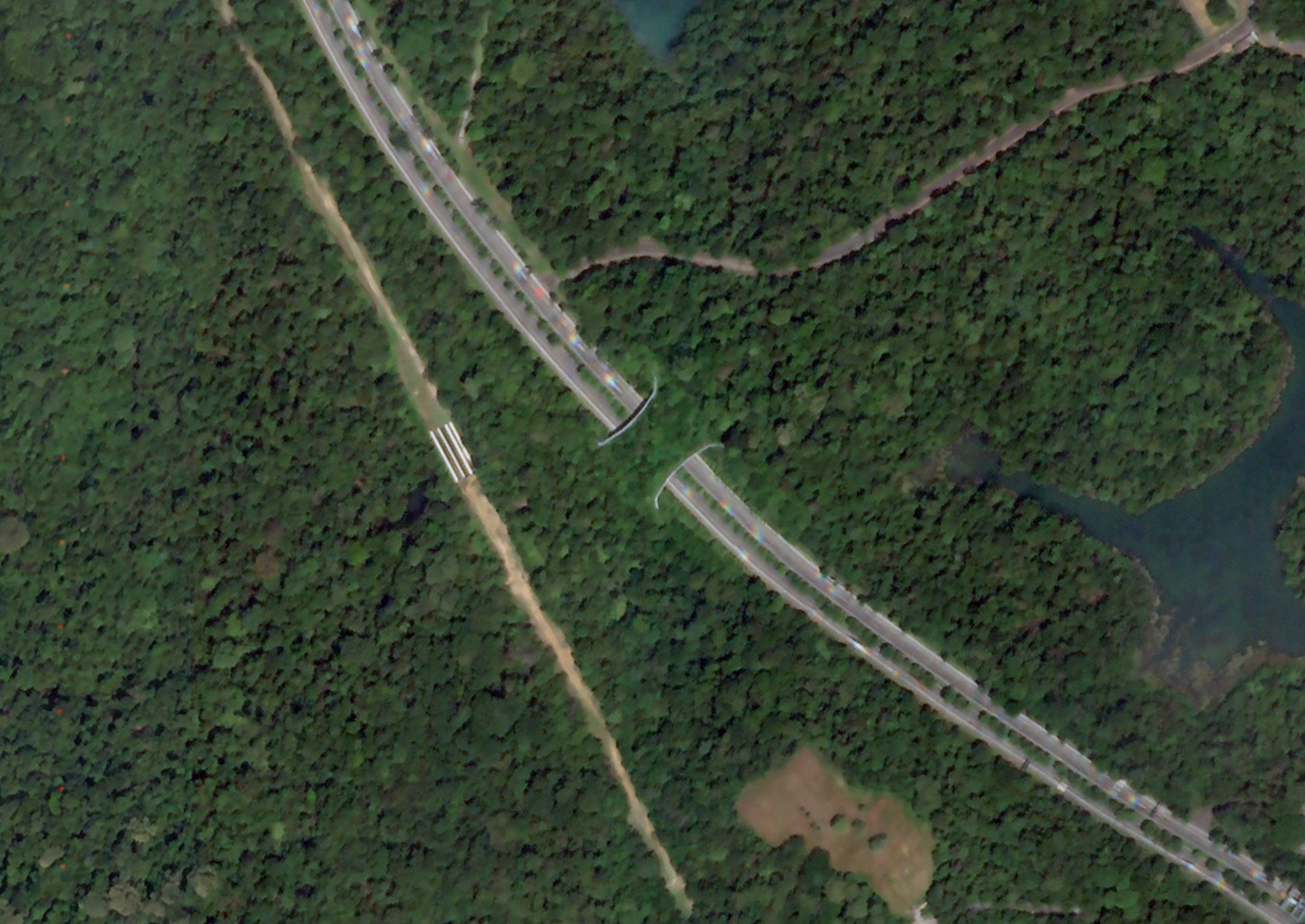 |
SkySat • Eco-Link@BKE, Singapore • April 12, 2021 |
Even though this is only a small subset of good news visible from space, the outlook is still grim and the path forward is long and uphill. But we find hope in the progress made so far and are encouraged by the people working on reversing climate degradation. Plus our satellites show that there are wind turbines at the end of the rainbow. |
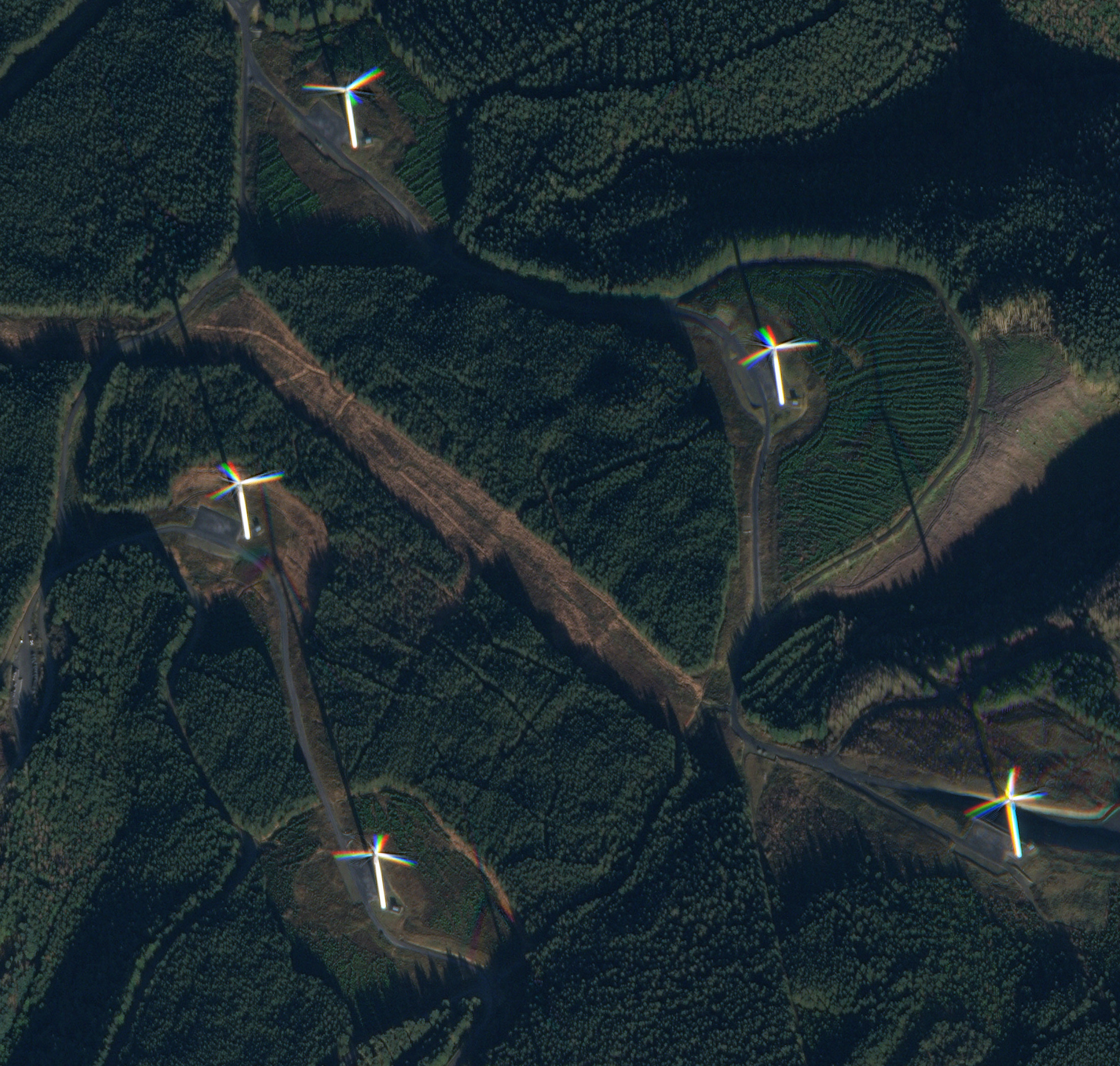 |
SkySat • Carmarthenshire, Wales, UK • December 5, 2021 |
Bonus: This year scientists discovered the world’s largest plant: a repeatedly-cloning seagrass covering over 180 km (112 mi) of Shark Bay in Australia. They estimate it to be at the youthful age of 4,500 years old and though it’s officially named Posidonia australis we’ve decided to call it Clifford the Big Blue Seagrass. Behold part of its glory: |
 |
PlanetScope • Shark Bay, Australia • April 22, 2017 |
|
|
|
|
|
|
|
|
Checkerboard Forests
As an alternative to the courtroom, environmentalists and the logging industry are hashing out their differences over the world’s largest game of chess. Just kidding (although it would be more exciting than court proceedings). This strange pattern is the work of 19th century forest policies that granted railroad companies every other square mile of land. Over time some of these were sold off for timber harvesting, leaving behind this residual tapestry.
|
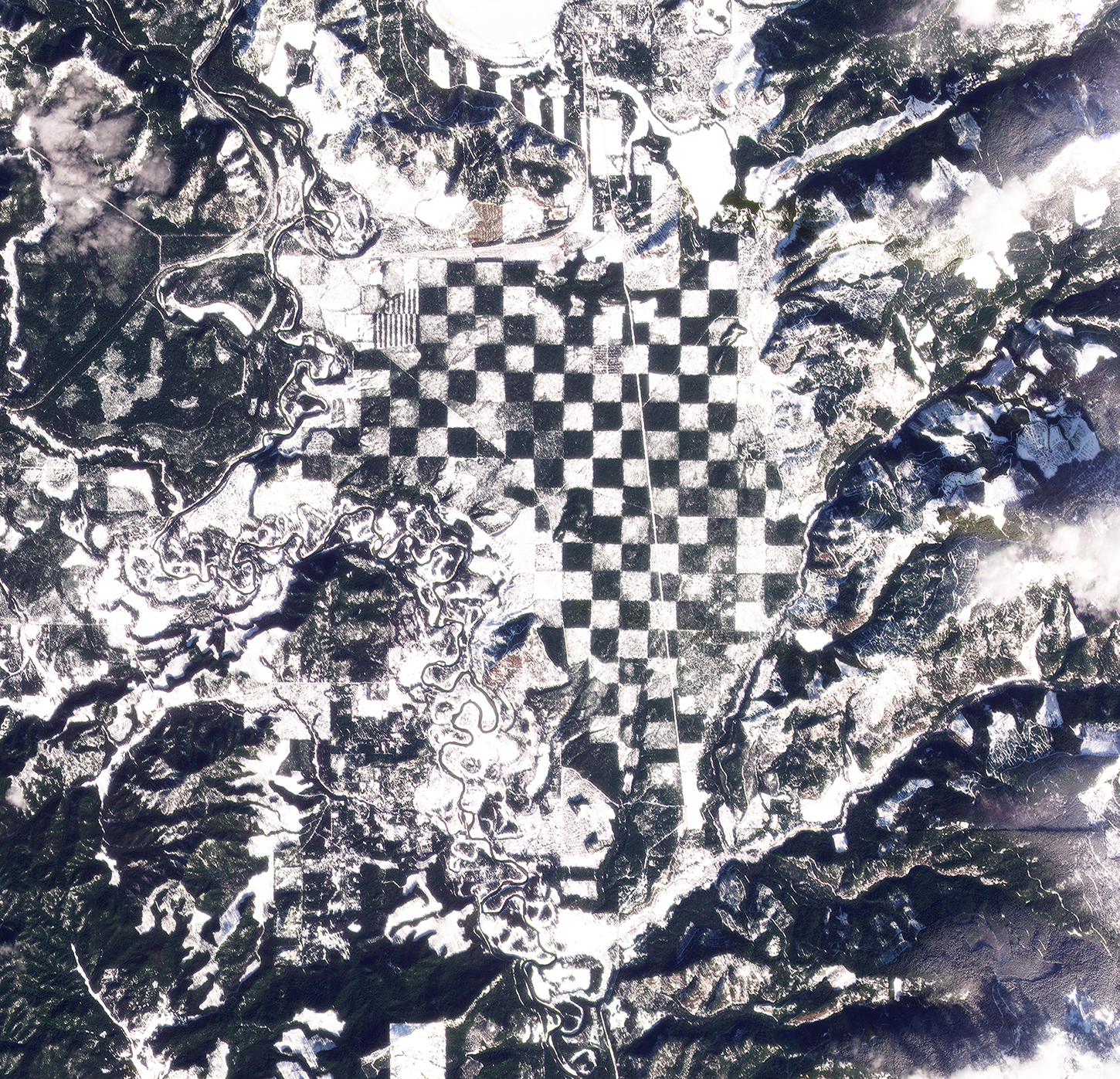 |
PlanetScope • Idaho, USA • March 5, 2022 |
In the Pacific Northwest, the checkerboard approach appears to be the rule, not the exception. It's a strategy also used for sustainable forest management, with some squares cleared while others are allowed to grow. Explore on Google Maps and you'll see just how much of the landscape is patterned. |
 |
PlanetScope • Oregon, USA • June 21, 2022 |
|
|
|
|
|
Change of the Week: Flooding in Italy
Floods followed fire in many parts of Europe towards the end of the summer. And Italy’s Marche region was hit particularly hard on September 15th as six months worth of rain fell within three hours. Water inundated towns and villages on the eastern edge of the Apennine Mountains, then flowed down towards the Adriatic Sea. This time-series shows the normally blue waters transform as runoff and sediment plume outwards from the river’s mouth. |
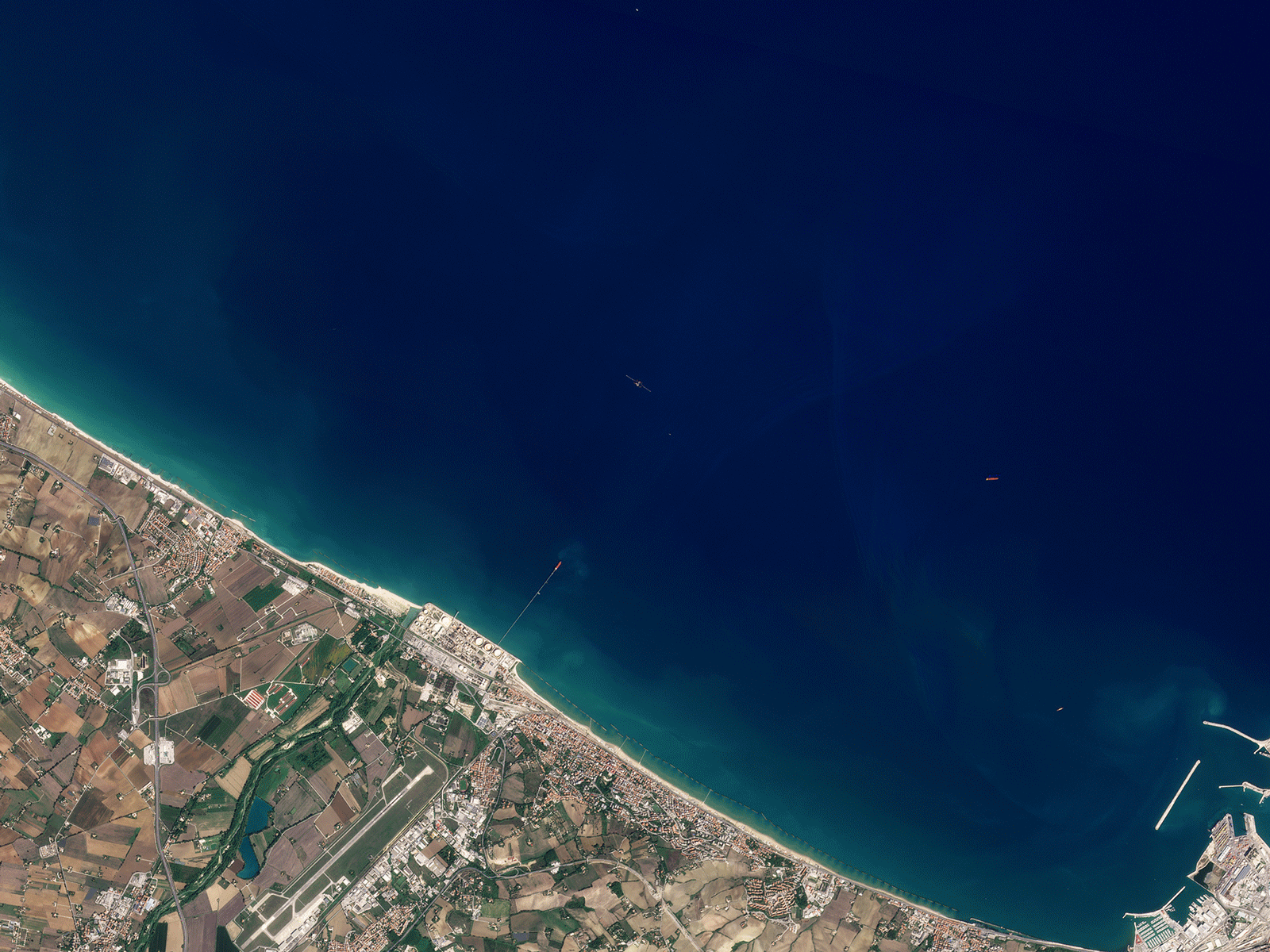 |
PlanetScope • Ancona, Italy • September 9, 16, and 18, 2022 |
|
|
|
|
|
Weekly Revisit
Last week we continued our border series with a feature on natural boundaries: rain shadows, altitudinal ecotones, river divisions, plate tectonics, and more. So check it out in case you missed it and take a look at the whole archive if you’re extra curious.
|
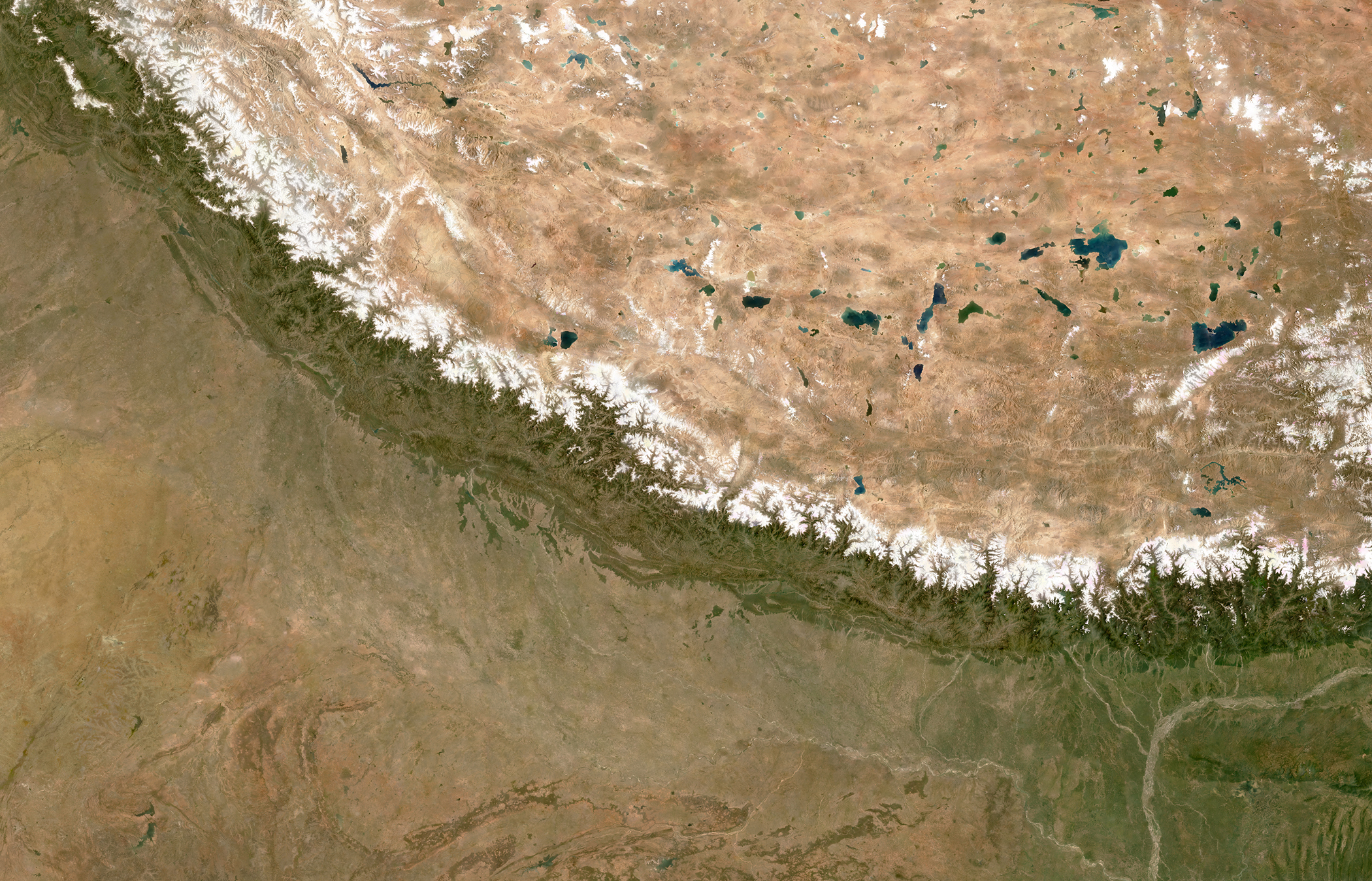 |
Planet Visual Basemaps • The Himalayas, Asia • April - June, 2020 |
|
|
|
|